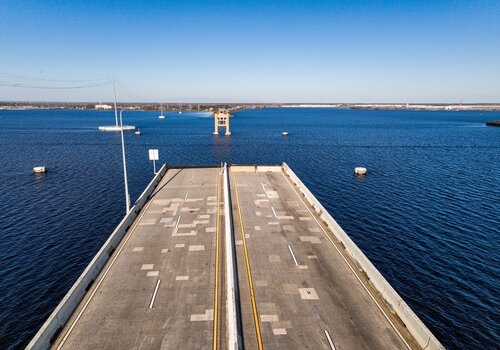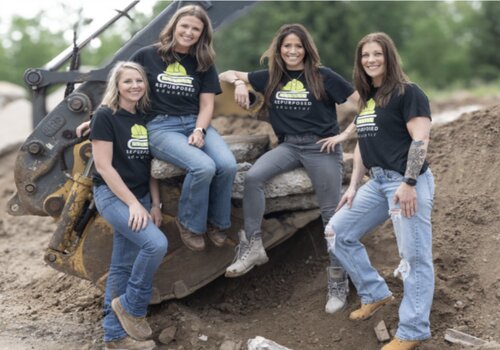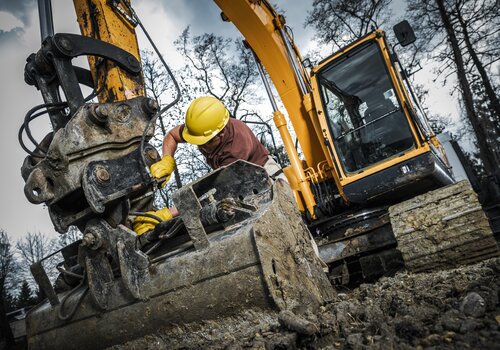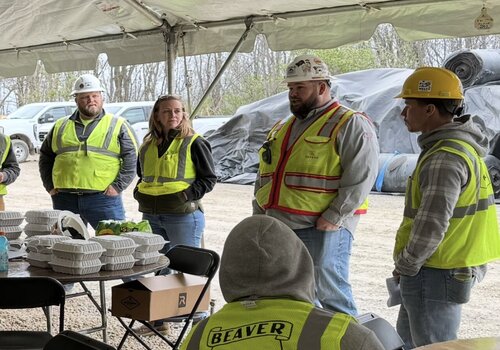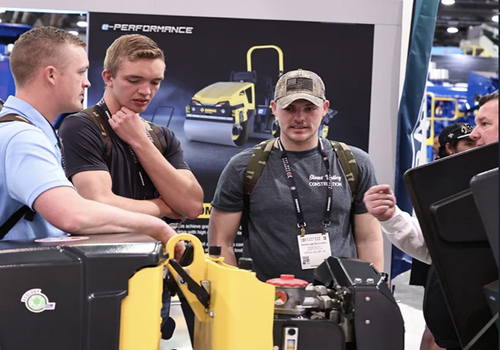Imagine driving across a bridge that quietly flexes under load, monitored in real time, with maintenance scheduled before cracks become hazards. As bridges age and demand grows, the industry is investing in smarter equipment and advanced inspection tools to keep America’s bridges safe.
Here’s where we are and where we’re headed.
THE LANDSCAPE: BACKLOGS, FUNDING AND URGENT NEED
Bridges are under stress. According to The Pew Charitable Trusts, states currently fall short in funding needed repairs, with transportation asset plans consistently showing gaps in investment to keep bridges and roads in optimal condition.
Even as the backlog mounts, contract awards for highways and bridges are climbing. By March 2025, state and local governments had awarded $33.5 billion in highway/bridge projects, an 11.7% increase over the same period in 2024.
To help close that gap, the Infrastructure Investment and Jobs Act (IIJA) focused on bridge funding. Still, demand is vast with reports suggesting that between 300 and 600 bridges are being replaced or upgraded annually nationwide. At that pace, the backlog of distressed bridges could still require decades to address.
The global bridge construction market was valued at $120 billion in 2025 and is projected to climb to $163 billion by 2030, growing at a compound annual rate of 6.23% over the forecast period.
These signals underscore the urgency: for agencies, contractors and equipment firms to align for scale, speed and smarter tech.
TECHNOLOGY TRENDS TRANSFORMING BRIDGE WORK
Bridges are more than concrete, steel and girders. Technology plays a growing role in inspection, maintenance and delivery. Here’s what to watch:
Smarter & autonomous inspection tools
You no longer need to send inspectors crawling under a span. Advanced non-contact sensors, laser scanning and robotic inspection systems are becoming more common.
These tools reduce risk and cost and, when integrated into asset management systems, they allow predictive, rather than reactive, maintenance.
More prefabrication, modular assembly
To speed up work and limit traffic disruption, more bridges are being built with prefabricated modules or segments off-site, then moved in and connected. Such techniques reduce site time and allow better quality control.
Materials, quality control and modular techniques all reduce rework and waste. These methods are being used more often, particularly in contracts with tight lane-closure windows or high traffic volumes.
Equipment outfitted with structural health integration
Bridge construction equipment is being designed with data coupling in mind. Examples include sensors embedded in girders and fiber-optic lines that continuously monitor bridge health. Over time, equipment may calibrate, adjust or trigger alerts like flood warning for vehicles.
If your firm bids on long-span or signature structures (e.g. cable-stayed or moveable bridges), specifying “sensor-ready” or “health-integrated” materials and equipment can give you a competitive edge.
NOTABLE PROJECTS TO WATCH
Francis Scott Key Bridge (Baltimore, MD): After the 2024 collapse caused by a ship collision, Maryland is rebuilding with a new cable-stayed design. The new bridge will be wider, higher and built with modern design techniques, with reopening expected in 2028.
I-395 Signature Bridge (Miami, FL): This arch-style centerpiece in downtown Miami is under active construction. It combines architectural ambition with traffic utility. As of early 2025, crews have erected multiple arch segments, though schedule adjustments have extended the timeline.
These projects reflect modern demands: aesthetics, resilience, traffic optimization and sustainability along with long-term health.
ADVICE FOR CONTRACTORS AND EQUIPMENT TEAMS
Here are five steps you can take now to align with bridge infrastructure trends:
-
Adopt smart inspection tech early. Begin with pilot projects using laser scanning, robotic crawlers or drone-based sensors. Prove ROI in lower inspection cost, downtime and better data.
-
Build modular and prefabrication capability. If you don’t already, partner with precast vendors or segment assemblers to reduce field time.
-
Include sensor readiness in specs. When bidding, ask your engineers and owners to include “health-monitoring capable materials and embed points” so future data can integrate seamlessly.
-
Train staff in analytics. Cast your inspectors, field engineers, and maintenance teams into data users, not just eyeball checkers.
-
Manage schedule risk tightly. Because many bridge projects are on critical paths (highways, interstates, freight routes), ensure optimal resource allocation, risk buffers and fallback plans for equipment failure.
LOOKING AHEAD: BRIDGES OF THE FUTURE
By 2030, you may find:
-
Bridge decks with embedded sensors reporting stress, cracks or corrosion in real time.
-
Inspection of drones or robots that work 24/7, checking components autonomously.
-
Modular spans delivered by heavy-lift transporters and installed overnight with minimal traffic closure.
-
Integrated design and cost tools that suggest optimal material mixes for durability (balancing carbon, cost and longevity).
-
Hybrid inspection/maintenance machines that combine scaffolding, repair tools and scanning in one unit.
-
Bridges will become living structures, not static spans, and equipment will follow.
FINAL THOUGHTS: THE OPPORTUNITY FOR BRIDGE BUILDERS
Bridgework is often among the highest-stakes, highest-visibility construction you’ll do. Failures or delays attract media attention and political pressure. But with growing demand and evolving technology, bridge projects represent a frontier of innovation.
Learn about the latest infrastructure trends in 2026 at CONEXPO-CON/AGG 2026. Explore the education sessions and register today.
Photo credit: SHUTTERSTOCK/PTAP AERIAL

